DUTCH HARBOR, Alaska - The Marine Board of Investigation into the Alaska Ranger casualty began Monday's session by taking testimony from Capt. Craig Lloyd, Commanding Officer of the Coast Guard Cutter Munro.
According to Lloyd's testimony the Munro received the Alaska Ranger's mayday at 2:52 a.m.
Munro immediately made best speed to the Alaska Ranger's position, using their turbine engines, which propels the ship faster than the diesel engines. At 5:55 a.m. the Munro launched their helicopter. They were about 50 miles away.
Due to the stops they had to make to accommodate helicopter operations they did not reach the scene before the helicopters and the Alaska Warrior picked up the crew of the Alaska Ranger.
The MH-60 Jayhawk helicopter was unable to lower the survivors they had on board to the Alaska Warrior due to icy decks and rigging in the way of the basket.
The helicopter radioed at 6:12 a.m. to the Munro that they were en route with survivors that needed emergency medical care.
At 6:44 the helicopter crew began lowering survivors. Of the 12 survivors onboard the helicopter nine were ambulatory and three were non-ambulatory. As the 12th member was lowered the helicopter crew passed that that was the last survivor on board.
The MH-60 helicopter began to conduct in-flight refueling (HIFR). Usually this operation takes 15 minutes and the ship stays at minimal speed.
The Munro broke off the HIFR with the MH-60 in order to dash to rendezvous with the HH-65 helicopter, which was fuel critical. The HH-65 landed on board with five survivors and 18 minutes of fuel left until splash down. The MH-60 later returned with four more crewmembers onboard.
A total of 21 crewmembers were delivered to the Munro. One man was non-responsive; he was immediately taken to sickbay where the medical crewmen conducted CPR and intubated the crewman. CPR efforts continued for 45 minutes before the flight surgeon directed them to cease efforts.
The Munro departed at 11:00 a.m. when it appeared all Alaska Ranger crewmembers were accounted for. At 12:35 p.m. Coast Guard District 17 North Pacific Rescue Coordination Center notified the Munro that one crewman still missing. The Munro returned to the scene and resumed search operations.
Lloyd said the discrepancy in numbers was noted during the flight operations but the crew was more focused on getting the helicopter refueled and back to the scene to rescue more crew.
The Munro conducted drug and alcohol testing on the helicopter crew as directed by District 17 NPRCC.
During the search for the missing crewman, Satoshi Konno, Lloyd said, "We saw a lot of debris. The MH-60 swimmer was lowered into the life rafts to check for survivors."
The lawyers for the Fishing Company of Alaska did question Lloyd for clarification on operations and the timeline of events.
Evan Holmes, of Neosho, Missouri, was next to testify. He was the factory manager on the Alaska Ranger and had worked on board the Alaska Ranger for about two years. He was a shift leader and became the factory manager on the previous underway tri. Holmes worked a 12 hours on six hours off schedule.
According to Holmes it was about 2 a.m. and he had gone to the galley to watch a movie. The telephone began to ring in the galley. "I thought someone was playing with the phone," he said. Then phone in the kitchen portion of the galley was ringing too.
Holmes ran up to the bridge to see if something was going on but before he reached it David Silveira told them they were taking on water in the ramp room.
Holmes and Chris Cossich, both members of the emergency squad, made their way to the ramp room on the port side through the factory and the harbor generator room. They saw a foot to a foot and a half of water in the ramp room.
"We didn't have our boots on," said Holmes. Holmes had on tennis shoes and Cossich was wearing flip-flops. They did not want to go through the water to the portable dewatering pump next to the bench in the shop, but decided to in order to get the pump. Holmes, Cossich, Indio Sol and another crewman began setting up the pump.
Before they fired up the pump the crew was directed to the wheelhouse to don survival suits by the Assistant Engineer Lundy. Holmes put the hose back inside the door, but left the watertight door open because more crewmen were coming up the stairs behind him. Holmes went through the house to make sure no crewmembers were still in any staterooms.
In the wheelhouse he donned his survival suit and heard the mayday call being made by Silveira, the Mate. Holmes confirmed what other crewmen have said that after donning their suits they rotated through the wheelhouse to stay warm until they abandoned ship.
Holmes said they took a roll call to make sure everyone was accounted for. He also stated the stern was sitting lower. A wave came over the stern and washed the nets into the sea. After the wave came over the stern the ship took an "unnatural shake to it and a hard list to starboard," said Holmes. He said the vessel stayed rolled over to starboard.
"You got your normal rolls in the ocean, but it felt like a rogue wave that hit real hard and it shook," said Holmes.
Once the ship rolled the crew was directed by the Captain to launch the rafts. Holmes saw two of the rafts inflate in the water. They were tied to the rail, but one broke away.
Holmes said he was probably the fifth man in the water. He held onto the line to his raft at first, but waves began to pull him under so he let go. "It was so strong pulling underneath," said Holmes. "So it was let go or drown right there."
He and two other crewmen hooked up to form a chain. A helicopter rescued all three; the helicopter crew tried to lower him to the Alaska Warrior, but decided it was too risky and delivered Holmes and the other crewmen to the Coast Guard Cutter Munro.
The board asked for more clarification on the factory operations, shipboard operations and the role of the Japanese fish master. When asked what the role of the fish master was Holmes replied, "Find the fish!" The fish master also made sure the nets were set correctly and occasionally observed the factory operations.
When asked about the drug and alcohol policy Holmes said the company has a no tolerance policy. He also confirmed that a crewman had been let go at the end of the previous voyage for coming back to the boat smelling of alcohol and being obnoxious. He never observed anyone drinking at sea.
The lawyers for the company asked a few clarifying questions before Holmes was released.
Following Holmes testimony the Board called Gwen Raines, one of two National Marine Fisheries Observers who were the Alaska Ranger.
Raines made one short voyage to the Pribilof Islands before returning to Dutch Harbor. She remarked that the fishing was unremarkable, but that there was a lot of ice around. She had just come from fishing in the ice so it didn't strike her as odd.
After returning to Dutch harbor to offload fish and change nets, the Alaska Ranger left on the fateful voyage. Raines stated that the vessel had a port list at departure. She said the crew indicated the full fuel tanks tended to give the ship a port list. They explained to her that after some of the fuel was used up the vessel would even out. She said the list and steaming in the trough of the waves made for a miserable ride.
Raines was asleep in her rack when the phone rang. She answered and there was no one on the line so she proceeded to the wheelhouse to see if they had been trying to reach her. When she reached the wheelhouse Silveira said, "This is bad - really, really bad." She heard Rodney Lundy, the Assistant Engineer, telling Silveira that there was water in the rudder room.
She saw Lundy and the emergency crew go below to partition off the areas that had flooding to save the ship. She said the Chief Engineer, Daniel Cook, wanted to prevent it from reaching the engine room. Raines said the crew was gone at least 30 minutes. She became concerned about the duration they were gone.
Meanwhile on the bridge, Silveira was communicating to the Alaska Warrior and made the mayday call to the Coast Guard. He kept a five-minute communications schedule with the Coast Guard.
The engines started to sputter and the lights flickered. Shortly after that Silveira stated he had lost steering and the vessel was moving astern.
Raines had put on her survival suit and Lundy activated her emergency position radio-indicating beacon on the wrist of her suit. She had Lundy activate it because the gloves on survival suit did not allow her to do so herself.
She said she went to her raft assignment and when it was launched they couldn't see if it deployed. She called back to Silveira. He started to come out of the wheelhouse to assess the situation and the painter line to the raft parted.
On the other side the painter was still connected to the raft, but it was a long way down. She saw one man climb down. She attempted to do the same, but fell into the water. Once in the water she found the painter and pulled herself to the life raft. She said two of the Japanese technicians pulled her in. She did not watch the ship go down, but did listen to the conversations of others. They said the vessel sank in about 15 minutes.
Raines was asked about the condition of the vessel. She recalled a laundry list of safety items that she has to inspect to determine if she should sail on a vessel. She said several items on the list must be correct or she is not allowed to get underway on the vessel. There are also discretionary items. She was concerned with two items, but decided to remain on board and report the items later.
When asked about drills she said only one was conducted while she was onboard. It took place at 2 a.m. and consisted of the crew mustering and describing where they would be and what their duties were in such a situation. Raines said they never discussed abandon ship procedures.
The board inspected the survival suits from the Alaska Ranger's crew at the Dutch Harbor fire station today. Some minor damages were noted.
The board will reconvene Tuesday at 9 a.m. and will hear testimony from two of the Japanese crew with the assistance of an interpreter.
MARITIME NOTES
Disaster Response
When G.A.P. Adventures learned its signature cruise ship was sinking off Antarctica last fall, its crisis management team kicked into action.
David Pett, Financial Post Business
Published: Tuesday, April 01, 2008
When Bruce Poon Tip's phone rang in the dying hours of Nov. 22, 2007, the founder and CEO of Toronto-based G.A.P. Adventures Inc. wasn't too concerned. Jeff Russill, the travel outfitter's director of product and operations, was on the line from his home in Toronto. Russill explained that Richard Heller, the company's expeditions coordinator, had just received a call from the Swedish-based tactical team for the company's prized cruise ship, the Merchant Vessel Explorer. It had hit an unidentified object, assumed to be ice, just south of the South Shetland Islands off Antarctica.
The Explorer, Russill noted, was stable and the crew was busy assessing the damage. All 154 people on board, meanwhile, were safe. "Jeff told me it was a manageable situation and I wasn't too worried about it, so I went back to bed," 41-year-old Poon Tip recalls. But less than half an hour later, the phone rang again. This time, Poon Tip was expecting the worst.
Russill explained that the ship had a hole torn in its hull, and water was accumulating in the lower deck. Captain Bengt Wiman had given the mayday signal and rescue ships were headed towards the scene. The bilge pumps were removing water and passengers were gathering in the muster room on the top deck.
Russill told Poon Tip that they needed to assemble G.A.P.'s critical incident management (CIM) team, a group of staff who had been selected in advance to handle a potential crisis. Poon Tip rattled off the names of the CIM members he thought they would need, and Russill quickly phoned them. Within the hour, they had gathered at the company's offices in downtown Toronto. When Poon Tip entered the makeshift "war room," a third floor back office, the rest of the team, consisting of Russill, Heller and Frank Schuran, vice-president of product and operations, gave him more details on the situation.
For Poon Tip, the business he had built from the ground up was now precariously adrift in icy waters half a world away. A ship was sinking, lives were on the line and Poon Tip and his colleagues knew that how they handled the situation would determine the passengers' fate and the fate of their company. In the hours that followed, they would struggle to make decisions and stay on top of the far-flung events as the Explorer was evacuated, passengers were rescued and the ship sank. In the weeks that followed, G.A.P.'s management would deal with the incident's aftermath, trying to make peace with clients and insurers and rebuild their business. The events - and G.A.P.'s handling of them - provide lessons to other companies that could potentially face crises of their own.
Poon had spent 17 years building G.A.P., which he started in a Toronto garage. Since then, the company had grown into the world's largest adventure travel outfitter, with annual sales of $120 million. It was considered the best by various industry experts, including National Geographic Adventure magazine, which rated the company the top "do it all" outfitter on the planet last fall.
A large part of G.A.P.'s success was due to its 2004 purchase of the MV Explorer. The iconic boat, known as the "little red ship" for its brightly painted hull, was the first cruise ship specifically designed to sail the waters off Antarctica. Since its initial expeditionary cruise in the South Pole region in 1969, it has become one of the most well-travelled cruise ships in history. Buying the Explorer helped legitimize G.A.P. Adventures, moving the company from a simple "backpackers" travel agency, to a big time adventure outfitter famous the world over for its polar expeditions.
With more than 1,000 tours worldwide and 70,000 customers a year, Poon Tip knew the company was likely to run into emergency situations from time to time. Over the past few years, efforts were made to develop the company's emergency response process. At the heart of the plan is the critical incident management team. When a potential emergency situation arises, each one of G.A.P. Adventures' department heads is authorized to call a CIM meeting to order. In the past year, meetings were called to co-ordinate tasks following the Peru earthquake and the outbreak of civil unrest in Kenya. In less severe cases, a simple e-mail to team members has sufficed. The end result can be as simple as posting a travel advisory on the G.A.P. website, or it can involve a trip cancellation or passenger evacuation. The Explorer incident, however, would put the company's CIM team to the test.
After the team arrived, the war room, with its brick walls and exposed duct-strewn ceilings, quickly filled with energy. Laptops hummed, phones beeped and voices crackled over the speakerphone the group was using to communicate with the ship's tactical team in Sweden, which was relaying information to G.A.P.'s Toronto office from the boat's crew. They all hoped they wouldn't need to rely on rescue ships for assistance, and planned to patch the Explorer's hull and return the ship to Ushuaia, Argentina, where the cruise had departed from 12 days earlier.
As voices on the speakerphone continually updated the team on the ship's status and safety of passengers, Heller, with assistance from the others, completed his predetermined task of phoning embassies, insurers and the search and rescue centre for the region. The team members also notified the nearest oil pollution response centre in Punta Arenas, Chile, and the agencies that employed the ship's crew.
The CIM team simultaneously updated the voice mail message and website with information on the situation, and set up phone hotlines to handle calls from passengers' family, friends and travel agents. As the night turned to day, G.A.P.'s customer service representatives began phoning passengers' emergency contacts.
The war room was a high-stress environment, made worse by the fact that the CIM team was so far from the scene of the incident. It was frustrating because it was difficult for them to gauge just how things were progressing.
After more than an hour in the war room, the team received distressing news from their Swedish colleagues: The ship's bilge pumps were overwhelmed and the engine rooms had flooded, causing the boat to lose power. The Explorer was now listing noticeably and drifting towards another sizable ice patch. Knowing the closer it got to the ice, the harder it would be to offload passengers safely, Captain Wiman decided to get passengers and the majority of the crew in lifeboats. Most of the crew would divert their energies from saving the ship to executing the evacuation.
The captain and selected crew remained onboard in a last gasp effort to save the vessel. Instead, the listing worsened, and after a couple of hours, Captain Wiman made the final call to abandon ship. Some 15 hours later, the MV Explorer sank to the bottom of the ocean. "It was a big decision to abandon ship," Poon Tip says. "Up to that point, many of us were sure it could be saved. But ultimately, the concern is for the passengers. When you've exhausted all options and it becomes unsafe, you have to do what's prudent to save the passengers, as opposed to what's financially prudent - saving the ship."
Although it was second nature for Poon Tip to call the shots, he knew it was best to follow protocol and allow his team to do their jobs. But Poon Tip still had to show he was in charge. Some staff coming into the building for their regular shifts were in tears; others were curled up on the floor, crying. He fired off an e-mail to staff to commend them for their handling of the crisis so far and urged them to keep working together. "This was a very emotional and devastating thing to happen and people were relying on me for energy at the lowest points," he says. "There were times when I felt like it could fall apart, with the emotions that were going through everybody, especially in the war room."
With passengers now crammed in lifeboats, battling swells of up to two metres, the CIM team turned its focus to the potential rescue vessels, which were still more than four hours away. Although it wasn't the closest boat to the Explorer, the CIM team agreed that the Norwegian cruise ship MS Nordnorge was the ideal ship to handle the rescue. Poon Tip got on the phone and started negotiating with the ship's owner. With some 200 empty cabins, the Nordnorge could accommodate all of the Explorer's passengers comfortably. The ship also had medical services and plenty of food and drink - including a well-stocked bar that many stressed passengers would later take full advantage of.
By 3 a.m. ET, the Explorer was an international news story, headlining morning programs in Europe. In fact, even before the CIM team was assembled, members were being called on their cellphones by reporters eager for a scoop. By dawn in Toronto, most news outlets around the world had mentioned the incident.
Conspicuously absent at the war room table in the early hours of the crisis was Susan Hayes, G.A.P.'s vice-president of marketing. She wasn't notified until close to 3:30 a.m. "It was one of the worst decisions I made," Poon Tip says. Until Hayes was woken up, the rest of the CIM team had to answer the media barrage themselves, adding undue stress to an already tense situation.
"From the time I woke up, I did my first phone interview live on the BBC about five minutes after," Hayes says. "I was undressed for four hours and couldn't get in my car to go to the office. My cellphone voice mail was full, my home voice mail was full and every time I tried to place an outgoing call, an incoming call came in. It was just non-stop from the moment I woke up."
Despite only talking briefly with her colleagues, Hayes was able to accurately inform the media of the passengers' status and provide names and countries of origin. Hayes quickly took the tone with the media that G.A.P. was in control of the situation.
For days, outside scrutiny was relentless. Poon Tip recalls journalists staking out his home and making unwanted phone calls to family and friends. They even followed him to his local gym and waited as he worked out on the treadmill. At times, journalists' lines of questioning were extremely antagonistic. "It was like everyone was out to get us," Hayes says. Case in point was an early story regarding a May 2007 ship inspection that uncovered safety deficiencies, such as problems with watertight doors, improperly maintained lifeboats and missing search and rescue plans. Hayes was quick to set the record straight, pointing out that the deficiencies had been dealt with and the boat had been cleared for sailing by the appropriate authorities.
The passengers drifted for five hours before the Nordnorge arrived on the scene and lifted the evacuees on board. Although everyone was safe, it was hardly the end of the story for G.A.P. - the company's handling of events after the rescue would become fodder for Internet chatter and customer complaints that would occupy the staff for weeks to come.
Passengers travelled on the Nordnorge to international research stations on King George Island, where passengers washed up, ate and got some much needed sleep. G.A.P. had arranged for the Chilean Air Force to airlift passengers to Punta Arenas, Chile over the next couple of days.
In Punta Arenas, G.A.P. Adventures officials gave each passenger a US$200 voucher for a department store that had opened during off hours at the request of the Chilean government. Having lost everything but the clothes on their backs, passengers Rob and Cheryl Beck say the shopping excursion was a welcome treat after such a horrible ordeal. "To get clean clothes and regular shoes on our feet, it made us feel human again," says Cheryl.
Up to this juncture in the crisis, the couple from Edmonton was generally thankful for the rescue effort. Despite the lingering concerns about the evacuation, including overcrowding and broken engines on many of the lifeboats, the Becks never doubted the sincerity and hard work that G.A.P. put in to secure their safety. Unfortunately, for them and many other passengers, the goodwill towards the company began to chip away in Punta Arenas.
To start, the couple says counselling services were never offered. They also complain that efforts to reschedule flights home were complicated because G.A.P. representatives on the scene had no financial authority to book seats that weren't in economy class. The biggest grievance, however, revolves around the compensation G.A.P. originally provided to passengers. Each passenger was mailed a cheque for US$9,300 as reimbursement for the cost of the trip and personal belongings lost with the ship. In the Becks' case, the compensation didn't come close to covering the full cost of the trip, despite alleged promises back in Punta Arenas that a full refund would be forthcoming. After complaining, the couple ended up getting close to a full refund, but both Rob and Cheryl remain bitter. To this date, they say G.A.P. has not adequately apologized for the ordeal they were put through.
In response, Susan Hayes says counselling was offered, although she admits some passengers may not have been informed about the service. As for the flights home and refunds, Hayes says G.A.P. officials had arguments with the insurers on how the passengers should be compensated, but ultimately were forced to defer to their insurance company. "Once the boat sank, a lot of decision-making abilities were stripped from us by the insurance company, and we struggled with that," says Hayes. "Had we been in charge, we would have handled things differently."
In February, three months after the sinking of the Explorer, a sombre mood lingers in G.A.P.'s Toronto office. Even though overall, management is proud of the way the crisis dealt with, there's a sense that certain aspects could have been handled better. They're still spending time dealing with the logistical, financial and emotional aftermath of the incident. "When we bought the ship, it showed our innovation, our creativity and our motivation," says Poon Tip. "The Antarctic expedition really defined us, so to lose it was, in some respects, to lose a family member."
G.A.P. management are consulting with lawyers, in anticipation that some passengers might file lawsuits in an attempt to get increased compensation. Poon Tip and his colleagues are also pro-viding information to investigators from the Liberian International Ship and Corp. Registry, where the ship was registered. They have also been working to improve its emergency response procedures, creating a formal document outlining when a CIM should be called to order and who should be involved.
The accident also had a big financial impact on the company. The cost of the ship was covered by insurance, but G.A.P. was forced to cancel its Antarctic expeditions for two months, costing the company millions. (G.A.P. is a private company and won't release exact figures.) However, the company moved quickly to stem the losses. Just one week after the sinking, Schuran went to Russia, where he chartered a 68-passenger cruise ship, the Polaris, in order to save half of the company's Antarctic cruise season. Chartering the boat cost the company a fortune, but it sent an important message to passengers and business partners that G.A.P. Adventures was not abandoning the route. "We'll return the Antarctic route to profitability in the next few years," says Poon Tip.
Despite the lingering anger from some passengers, Martha Chapman, a PR specialist with Tourism Marketing International who rescheduled clients' travel plans after the September 11 attacks and has managed evacuations from the Caribbean during hurricanes, praises G.A.P.'s handling of the crisis. She says that by acting swiftly and decisively, the company has maintained its positive reputation. "I haven't heard anyone in the industry badmouthing G.A.P.," she says. "They had a plan, and under the circumstances, they looked good in the media and handled the situation as best they could." In a strange way, she adds, the accident has brought awareness of the company to a whole new audience.
The biggest validation that G.A.P. handled the crisis well is the response from travel-loving members of the public. In February, just three months after the sinking, G.A.P.'s business was bullish, with bookings up 41% year-over-year in all areas. Today, more passengers than ever are on its waiting lists. The company's business partners, meanwhile, are standing by G.A.P. as it decides its next steps in Antarctica. "We look at this as one of our lowest moments and one of our proudest moments," Poon Tip says. "The crisis showed the world the level at which we're able to perform. Although you prepare for these things, you can never really be ready, so when you're given the opportunity to prove yourself in very tragic situations, it's quite uplifting."
The media and disaster: amplifying the crisis
From the sinking of the Titantic to the recent tainted pet food recall, the media have always been keen to cover disasters. But how companies handle crises first became a staple in the news in the late '60s and '70s, when broadcast media was coming of age, putting companies' actions under greater scrutiny.
One well-known incident was the massive 1978 Firestone tire recall. The company wasn't cooperative with regulators, and management blamed consumers, claiming tires were under-inflated and poorly maintained. Eventually, the company paid millions in compensation and business schools wrote case studies about Firestone's poor decision-making.
In contrast, the 1982 "Tylenol scare," when seven people died from contaminated pills, is seen as a textbook example on how to successfully manage a crisis. Parent company Johnson & Johnson's executives acted decisively, alerting hospitals and distributors and halting Tylenol production and advertising. They also quickly introduced a triple-sealed package. After briefly plummeting, Tylenol's market share quickly rebounded.
Another more recent example with obvious parallels to the Explorer was the sinking of B.C. Ferries' Queen of the North, in 2006. B.C. Ferries' reputation was tarnished after wrongly reporting that all 99 passengers and crew members were rescued. In the days that followed, the ferry operator realized that two people were unaccounted for and eventually, they were presumed dead. - David Pett
Dealing with disaster: How to avoid the worst
One day, you could be the one getting a call informing you that a disaster has happened. Managers need to be prepared: Their handling of the situation could affect the future of their company and their career. Here are some tips from crisis management experts on how to prevent and manage a crisis, and deal with the aftermath.
Identify potential crises. Take note of the functions and processes that are critical to your business and what would happen if they failed. A crisis can be physical (i.e., fire, earthquake or terrorism), involve a threat to your reputation (i.e., doing business with a controversial partner) or involve a major business interruption (i.e., computer systems fail).
Set up a crisis management team. A small group of executives should develop a document that lays out procedures for a crisis. "It is absolutely crucial that the team works through a simulated crisis, which involves having a facilitator introduce things like news bulletins and crucial decisions that need to be made," says London, U.K.-based crisis management expert Peter Power.
Prepare your planning room. It's important to set up your planning room with at least three televisions and the ability to record all breaking news broadcasts that involve your company.
Make it clear who will speak to the media. Immediately announce internally that the only people who should communicate with the outside world are the crisis team members. Your team should have media training specific to a crisis situation. Handling the media when you have hundreds of interview requests is quite different than when you're promoting a product.
Move quickly. The first few hours after a crisis are the most important because the media often builds upon that information. Martha Chapman, a PR specialist with Tourism Marketing International, says "a fast reaction is crucial to surviving a crisis with a good reputation."
Provide your stakeholders with some means of giving you feedback. Jonathan Bernstein of California-based Bernstein Crisis Management Inc. suggests putting a feedback form on your website, creating a blog with comments or setting up a toll-free number.
Let your stakeholders know everything is under control. Perception is everything. If people see you getting on with regular operations, they'll be more likely to do business with you again.
- Shereen Dindar
RS
 occurring phenomenon such as thunderstorms, hurricanes, and tornados. These concepts are usually introduced during the upper elementary years. Here, in North Carolina, we experience both hurricanes and tornados and this is enough to spur discussion and interest. If you live someplace where these weather systems do not occur, you can peak student interest by announcing that there are approximately 40,000 thunderstorms around the globe each day and that the class will have an opportunity to investigate how thunderstorms, hurricanes, and tornados form.
occurring phenomenon such as thunderstorms, hurricanes, and tornados. These concepts are usually introduced during the upper elementary years. Here, in North Carolina, we experience both hurricanes and tornados and this is enough to spur discussion and interest. If you live someplace where these weather systems do not occur, you can peak student interest by announcing that there are approximately 40,000 thunderstorms around the globe each day and that the class will have an opportunity to investigate how thunderstorms, hurricanes, and tornados form. NAMC’s Upper Elementary Physical Geography curriculum manual provides background information and presentations on many weather related topics, including: Weather Systems and Weather Maps, Investigating Hurricanes and Thunderstorms, and Investigating Cold and Warm Fronts.
NAMC’s Upper Elementary Physical Geography curriculum manual provides background information and presentations on many weather related topics, including: Weather Systems and Weather Maps, Investigating Hurricanes and Thunderstorms, and Investigating Cold and Warm Fronts.


































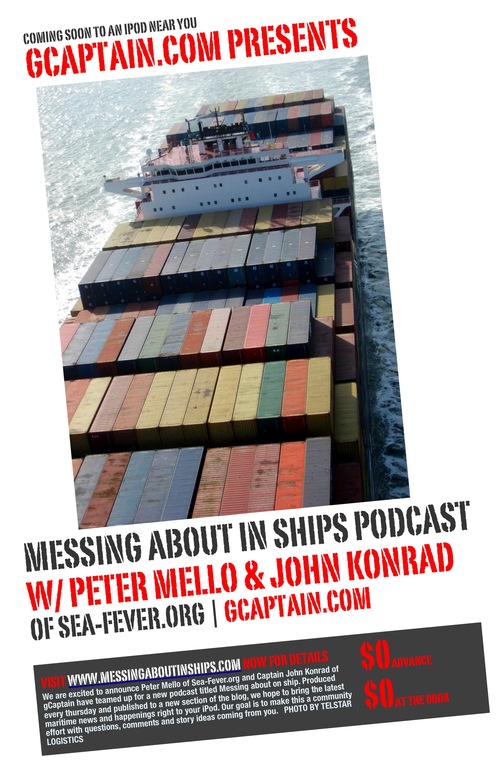










































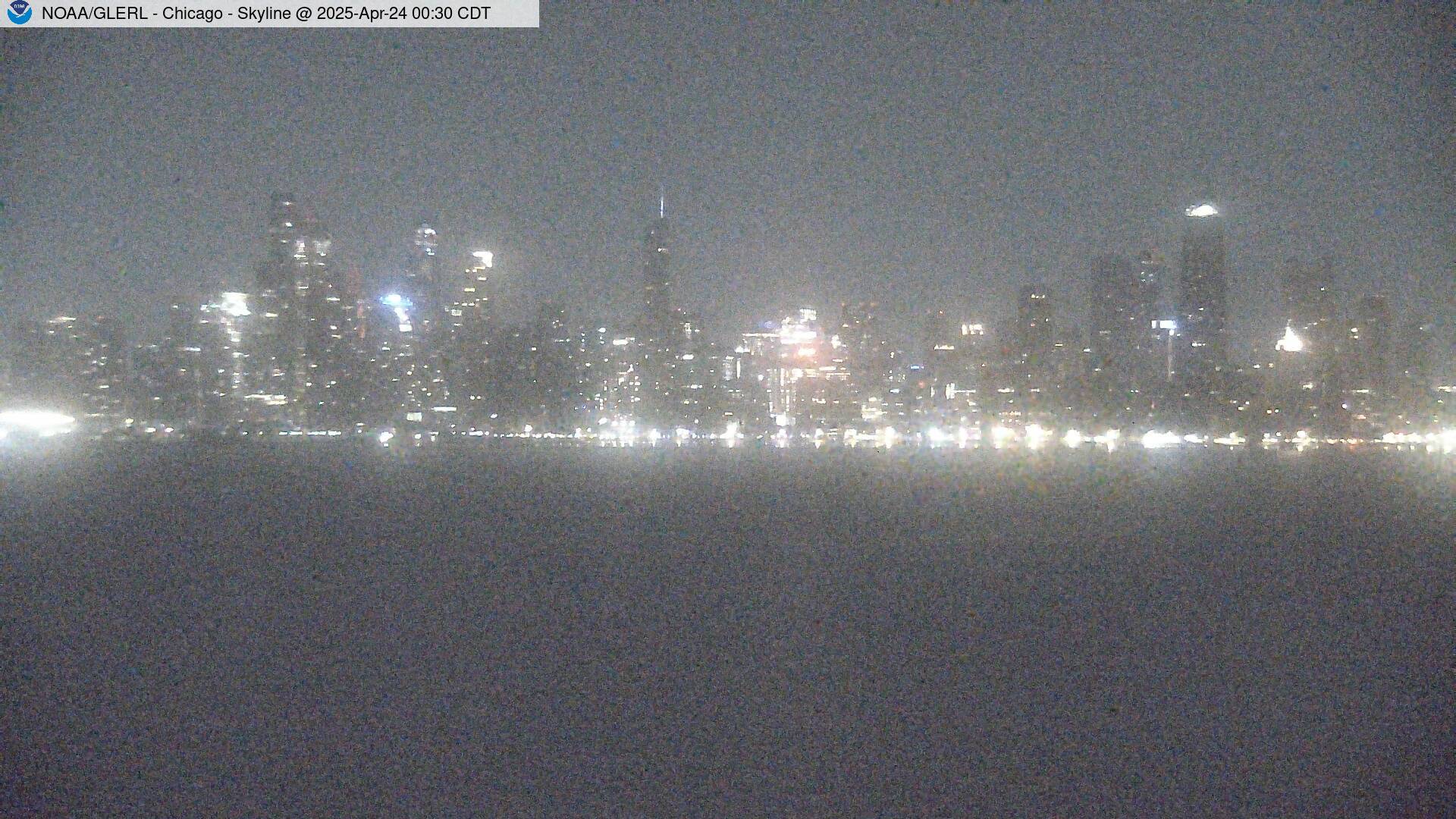













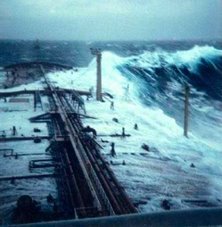
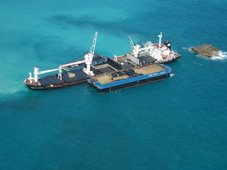


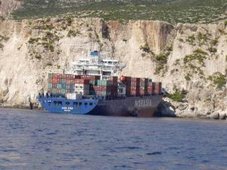




![Validate my RSS feed [Valid RSS]](valid-rss.png)